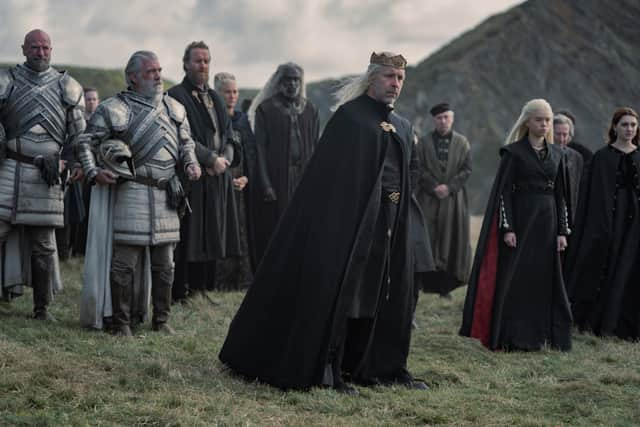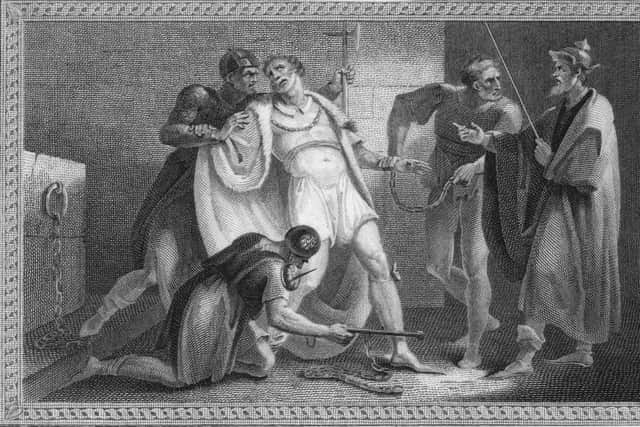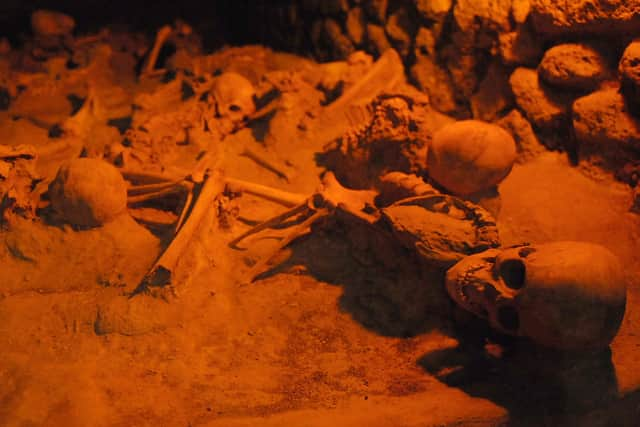Is House of the Dragon based on a true story? Events that inspired George Martin’s books including The Anarchy
and live on Freeview channel 276
House of the Dragon, the prequel series to the sprawling fantasy show Game of Thrones, is based on another work by acclaimed author George R.R. Martin.
Martin has not been shy about the amount of real-world British history he has pilfered in order to write his fantasy novels - the fictional continent of Westeros is even based on an upside down map of the UK.


Advertisement
Hide AdAdvertisement
Hide AdIn the Game of Thrones series, the War of the Roses was the primary inspiration for the War of the Five Kings, but other historical quirks made it into the novels and show too - the Massacre of Glencoe in 1692 inspired the Wed Redding, for instance.
The use of real events lends Thrones and a greater sense of authenticity, after all truth is stranger than fiction, and this is also the case with House of the Dragon.
What historical events is House of the Dragon based on?
The Anarchy
Martin’s 2018 novel Fire & Blood, which House of the Dragon is adapted from, was itself inspired by a period in British history known as The Anarchy.
The Anarchy was a period of Civil War in England and Normandy (which was controlled by British kings at the time) which lasted from 1138-1153.
Advertisement
Hide AdAdvertisement
Hide AdThe Anarchy was precipitated by the death of King Henry I’s only legitimate son, which meant that on Henry’s death in 1135, the king had no male heir.
Henry wanted his daughter, Empress Matilda, to succeed him, but his nobles did not like the idea of being ruled by a woman. Henry forced them to swear oaths of loyalty to Matilda, but on his death they quickly turned on her, and supported the claim of Henry’s nephew Stephen.
What followed was years of warfare between the two claimants to the throne, and a complete breakdown in law and order across Britain.
The parallels between The Anarchy and House of the Dragon are glaring - King Viserys I is without a male heir and has pressured his councillors into supporting the claim of his daughter Rhaenyra.


Advertisement
Hide AdAdvertisement
Hide AdNot all of Viserys council are comfortable with a woman ruler, and the king’s brother Daemon, is clearly angling to be installed upon Viserys’ death.
The Dance of Dragons - the civil war that will break out following Viserys’ death, and which is referenced in Game of Thrones, will be a protracted bloody war, and will likely also see societal breakdown across Westeros.
In the case of The Anarchy, Stephen was successful in taking the throne, however it’s not necessarily the case this will be mirrored in House of the Dragon with a Daemon victory.
Speaking at a House of the Dragon panel at Comic-Con, Martin said: “I get inspiration from history, then I take elements from history and turn it up to 11.”
Advertisement
Hide AdAdvertisement
Hide AdNew characters will be introduced as House of the Dragon progresses, and the series will likely expand far beyond its historical blueprint, just as Game of Thrones did.
Vesuvius and other volcanic disasters
An-world historic event mentioned by characters in both Game of Thrones and House of the Dragon is the Doom of Valyria.
This was a devastating volcanic event that destroyed Valyria, the freehold where the Targaryens and other dragonlords lived.


The Targaryens were the only major house to survive the Doom, because they left Valyria for Dragonstone a century before the disaster.
Advertisement
Hide AdAdvertisement
Hide AdMartin was inspired by several real-world volcanic events when creating Valyria, these included the Mount Tarawera eruption that destroyed the Pink and White Terraces in New Zealand in 1886, and the 1883 eruption of Krakatoa in which tens of thousands of people were killed.
The most famous eruption which Martin was inspired by was that of Mount Vesuvius in 79AD - the disaster completely destroyed Pompeii and Herculaneum and killed thousands.
Comment Guidelines
National World encourages reader discussion on our stories. User feedback, insights and back-and-forth exchanges add a rich layer of context to reporting. Please review our Community Guidelines before commenting.
